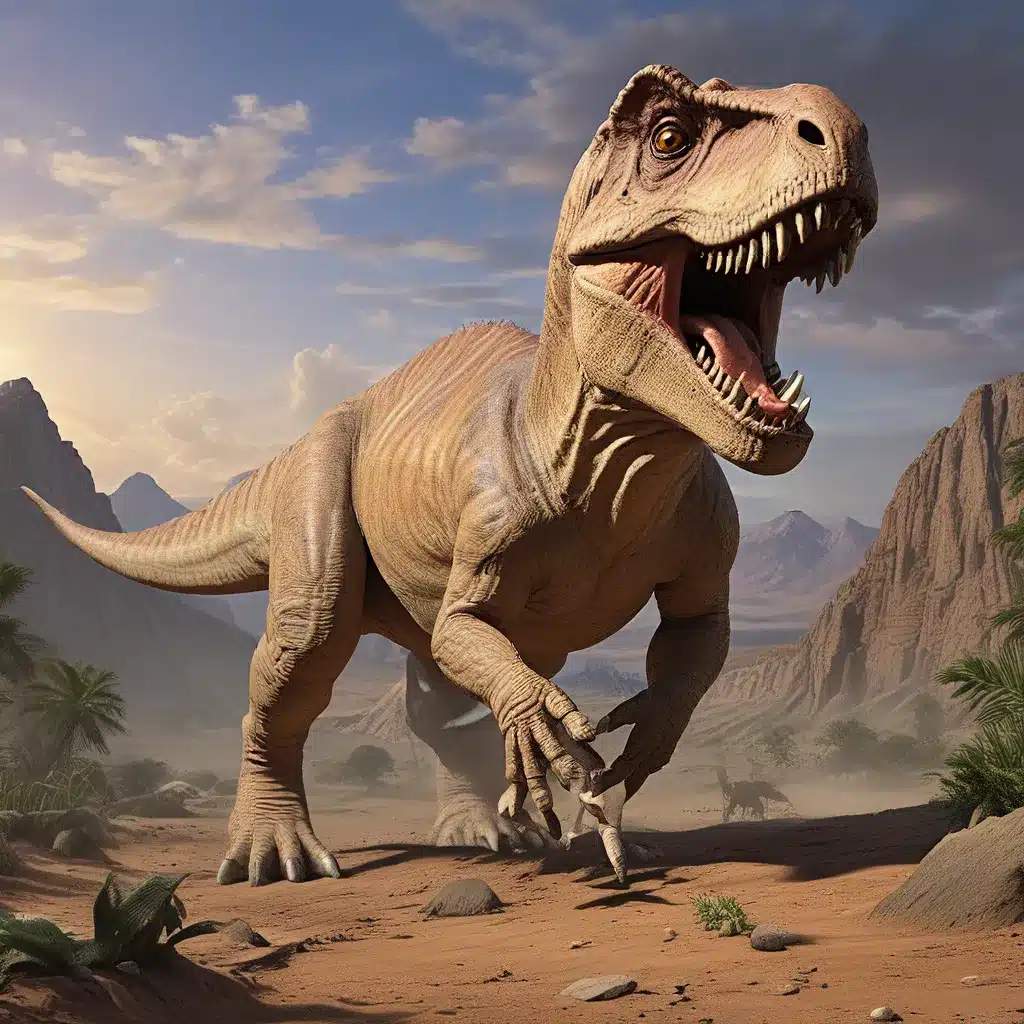
Uncovering the Roots of an Iconic Lineage
The Triassic Period, spanning from 252 to 201 million years ago, was a pivotal time in the history of life on Earth. It was during this geologic epoch that the first dinosaurs emerged, setting the stage for their eventual rise to dominance. Through the painstaking work of paleontologists and the analysis of an ever-growing trove of fossil evidence, we are now able to piece together a more comprehensive understanding of the evolutionary paths that gave rise to these magnificent creatures.
One of the key breakthroughs in this ongoing quest came with the discovery of the Triassic-aged dinosaur precursors, known as “dinosauromorphs.” These early reptilian forms, such as the Lagosuchus and Marasuchus, began to exhibit characteristics that would eventually become hallmarks of the dinosaur lineage. Their bipedal posture, long hind limbs, and distinctive skeletal features hinted at the burgeoning evolutionary trends that would culminate in the diverse dinosaur species that would dominate the Mesozoic Era.
Researchers have also uncovered evidence that the earliest dinosaurs likely emerged from a group of archosaurs, a broader reptilian clade that encompasses crocodilians and their ancestors. By analyzing the anatomical features and evolutionary relationships of these ancient reptiles, paleontologists have been able to trace the gradual transformations that gave rise to the distinctive dinosaurian body plan.
The Triassic Explosion of Diversity
The Triassic Period was a time of remarkable evolutionary diversification, as the world’s ecosystems recovered from the catastrophic end-Permian mass extinction that had wiped out an estimated 90% of all species on the planet. In the wake of this global upheaval, a wide range of reptilian lineages began to flourish, including the early ancestors of dinosaurs, pterosaurs, and marine reptiles.
One of the most significant Triassic discoveries was the unearthing of the Neotheropoda, a group of carnivorous dinosaurs that would eventually give rise to the iconic Tyrannosaurus rex and its kin. These early theropods, such as Coelophysis and Liliensternus, were relatively small in size compared to their later Jurassic and Cretaceous descendants, but they exhibited many of the characteristic features that would define the group, including sharp teeth, three-fingered hands, and a bipedal stance.
Alongside the emergence of these predatory dinosaurs, the Triassic also saw the diversification of the sauropodomorphs, the long-necked, plant-eating dinosaurs that would eventually include the largest land animals to have ever existed. Early sauropodomorphs, such as Plateosaurus and Riojasaurus, were still relatively modest in size, but they foreshadowed the massive proportions and distinctive anatomical features that would come to define the group.
Unraveling the Triassic-Jurassic Transition
The end of the Triassic Period, approximately 201 million years ago, was marked by another major extinction event that profoundly reshaped the world’s ecosystems. This Triassic-Jurassic extinction event, which may have been triggered by massive volcanic eruptions and climate change, paved the way for the dinosaurs to achieve their ultimate dominance during the subsequent Jurassic and Cretaceous periods.
Paleontologists have been studying the fossil record to better understand the dynamics and aftermath of this pivotal transition, which saw the decline of many Triassic-era reptilian lineages and the rapid diversification of the dinosaurs. By analyzing the anatomical features, evolutionary relationships, and ecological niches of these ancient organisms, researchers have been able to reconstruct the complex web of adaptations and competitive pressures that shaped the rise of the dinosaurs.
One intriguing aspect of this transition is the role played by environmental factors, such as changes in atmospheric composition, climate, and sea levels. Emerging evidence suggests that the Triassic-Jurassic extinction may have been exacerbated by a series of dramatic environmental shifts, which may have favored the adaptations and ecological strategies of the early dinosaurs and their closest relatives.
Deciphering the Triassic Fossil Record
The Triassic Period has long been a subject of fascination for paleontologists, who have meticulously combed through the geological record in search of clues to the evolutionary origins of the dinosaurs. This painstaking work has yielded a wealth of fossil discoveries, each of which has contributed to our understanding of this pivotal era in the history of life on Earth.
One of the most significant Triassic fossil finds in recent years was the discovery of Ascendonanus, a small predatory dinosauromorph that lived approximately 230 million years ago. This well-preserved fossil specimen has provided valuable insights into the anatomical features and evolutionary relationships of these early dinosaur precursors, helping to fill in crucial gaps in our understanding of the dinosaurian family tree.
Similarly, the discovery of Eoraptor, a small, omnivorous dinosaur that lived approximately 230 million years ago, has shed light on the early stages of dinosaur evolution. Eoraptor’s combination of primitive and advanced features has led researchers to conclude that it represents a transitional form between the dinosauromorphs and the first true dinosaurs, offering a glimpse into the complex and dynamic evolutionary processes that gave rise to this iconic lineage.
Unraveling the Triassic Puzzle
As the field of paleontology continues to advance, with new technologies and analytical techniques at their disposal, scientists are poised to uncover even more insights into the Triassic origins of the dinosaurs. Ongoing excavations, advanced imaging techniques, and interdisciplinary collaborations are all contributing to a growing understanding of this pivotal period in the history of life on our planet.
Through the careful study of Triassic fossils, the evolutionary pathways that gave rise to the dinosaurs are gradually being revealed, shedding light on the complex interplay of environmental factors, competitive pressures, and adaptive strategies that shaped the rise of these magnificent creatures. As we continue to delve deeper into the Triassic past, the treasures it holds promise to further transform our understanding of the ancient world and the origins of the iconic dinosaurs that would go on to dominate the Mesozoic Era.


